Abstract
Pigeons were provided with three keys. Pecking the center key produced grain on a schedule that alternated at unpredictable times between a variable-interval component and extinction. On concurrent variable-interval schedules, pecking either side key produced a stimulus associated with the variable-interval component on the center key provided that said schedule was currently in effect. The independent variable was the length of time this stimulus remained on the keys. Pecking one side key produced the stimulus for 27 seconds, whereas the duration produced by pecking the other key varied for successive blocks of sessions. For the first four birds, the values tested were 3, 9, 27, and 81 seconds. For the second group, numbering three birds, the values tested were 1, 3, 9, and 27 seconds. The dependent variable was the proportion of total side key pecks that occurred on the variable key. For all birds, the function was positive in slope and negative in acceleration. This finding supports a formulation that ascribes the maintenance of observing responses in a normal setting to the fact that the subject exposes itself to the positive discriminative stimulus for a longer mean duration than it does to the negative stimulus.
Keywords: observing, duration of stimulus, conditioned reinforcer, concurrent schedule, key peck, pigeons
Full text
PDF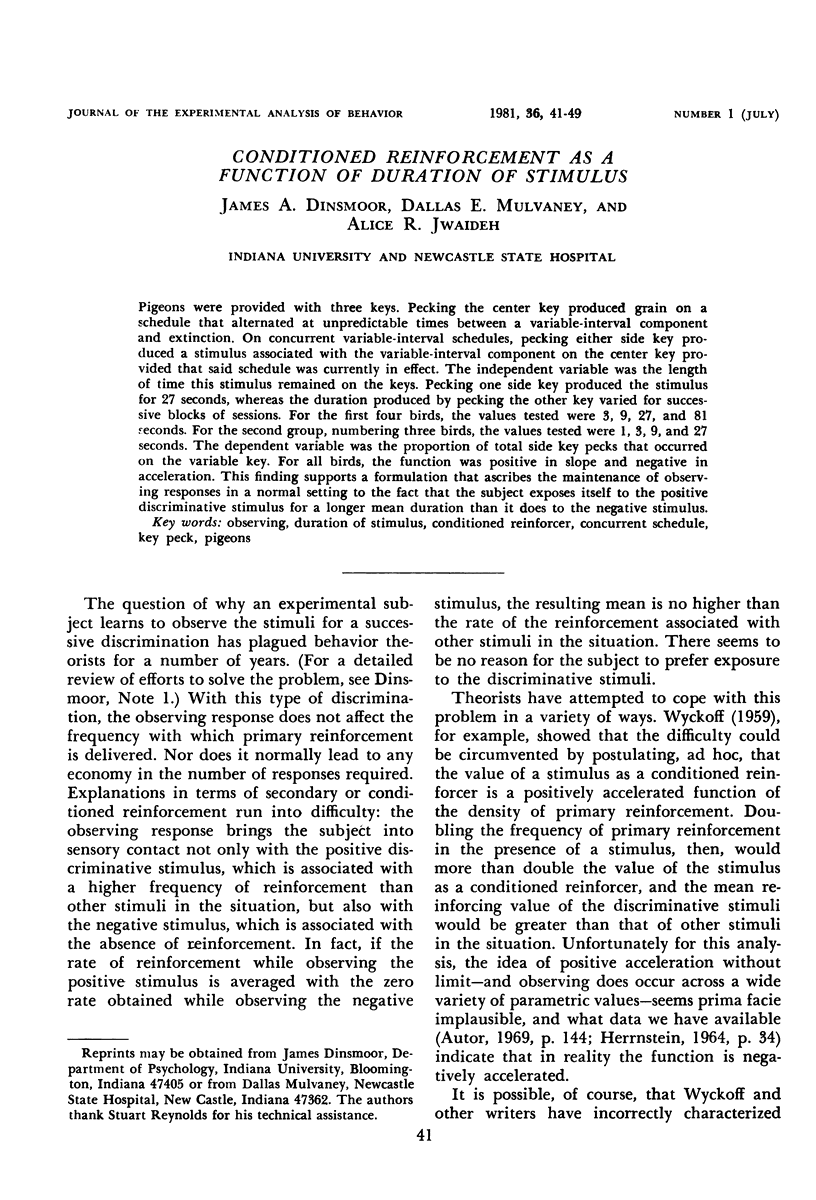
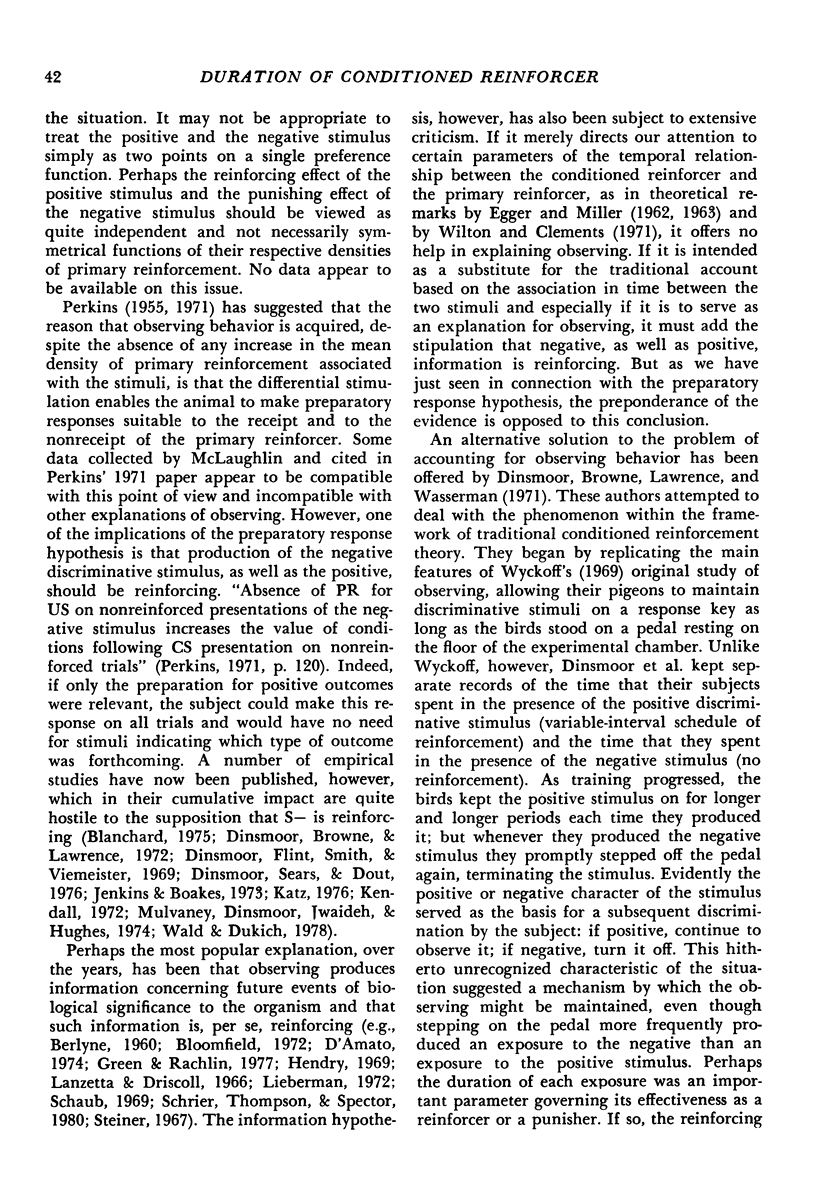
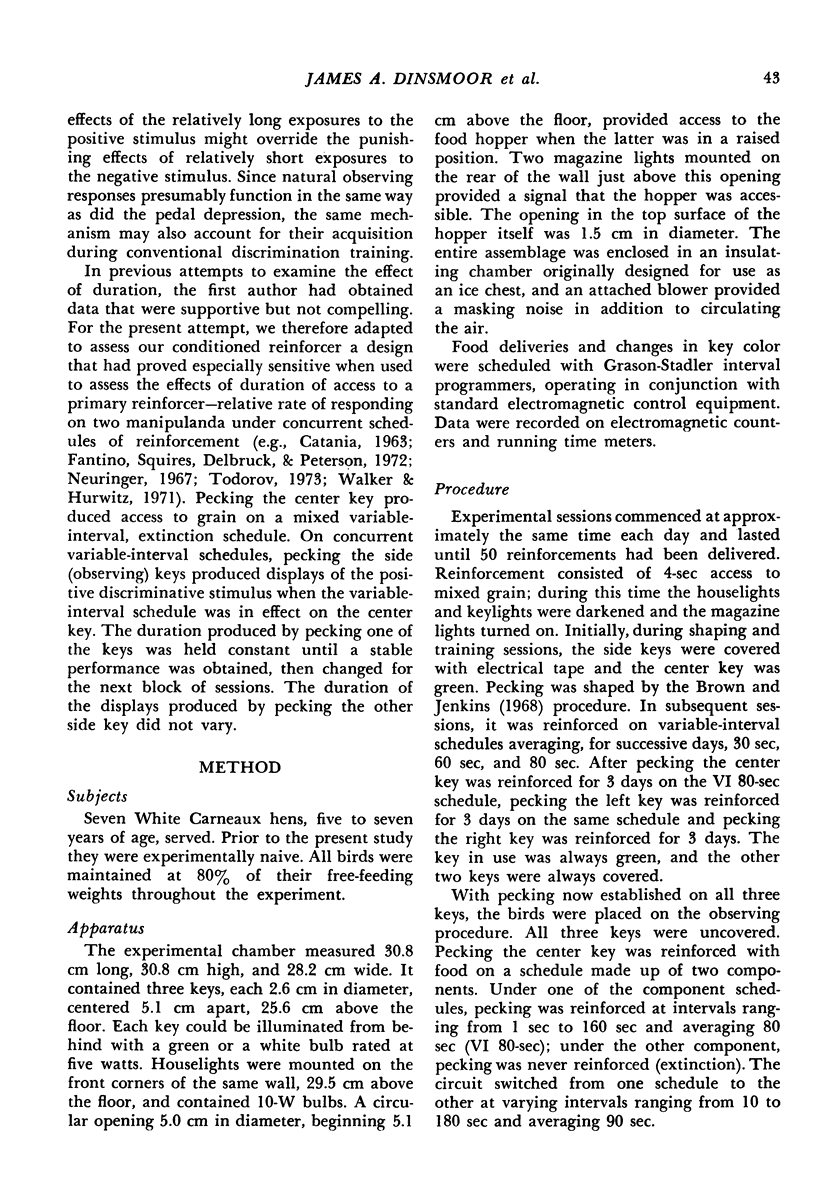
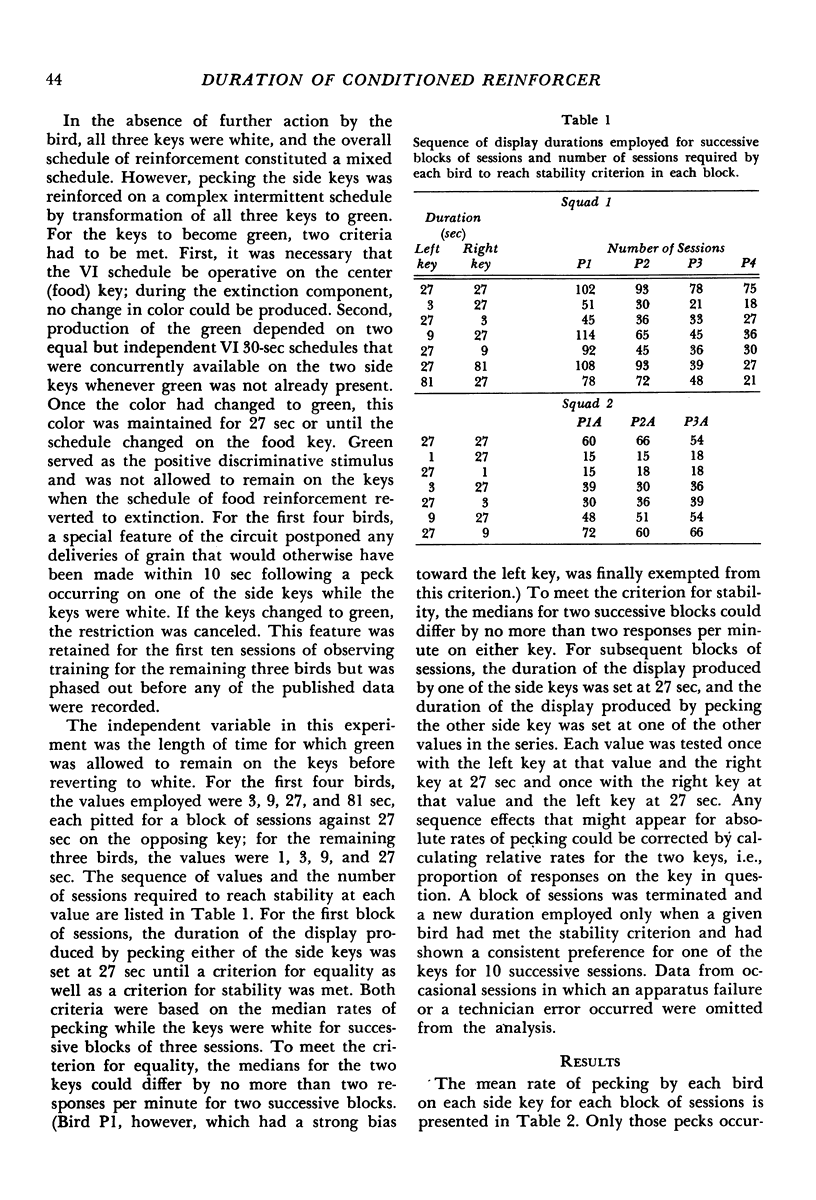
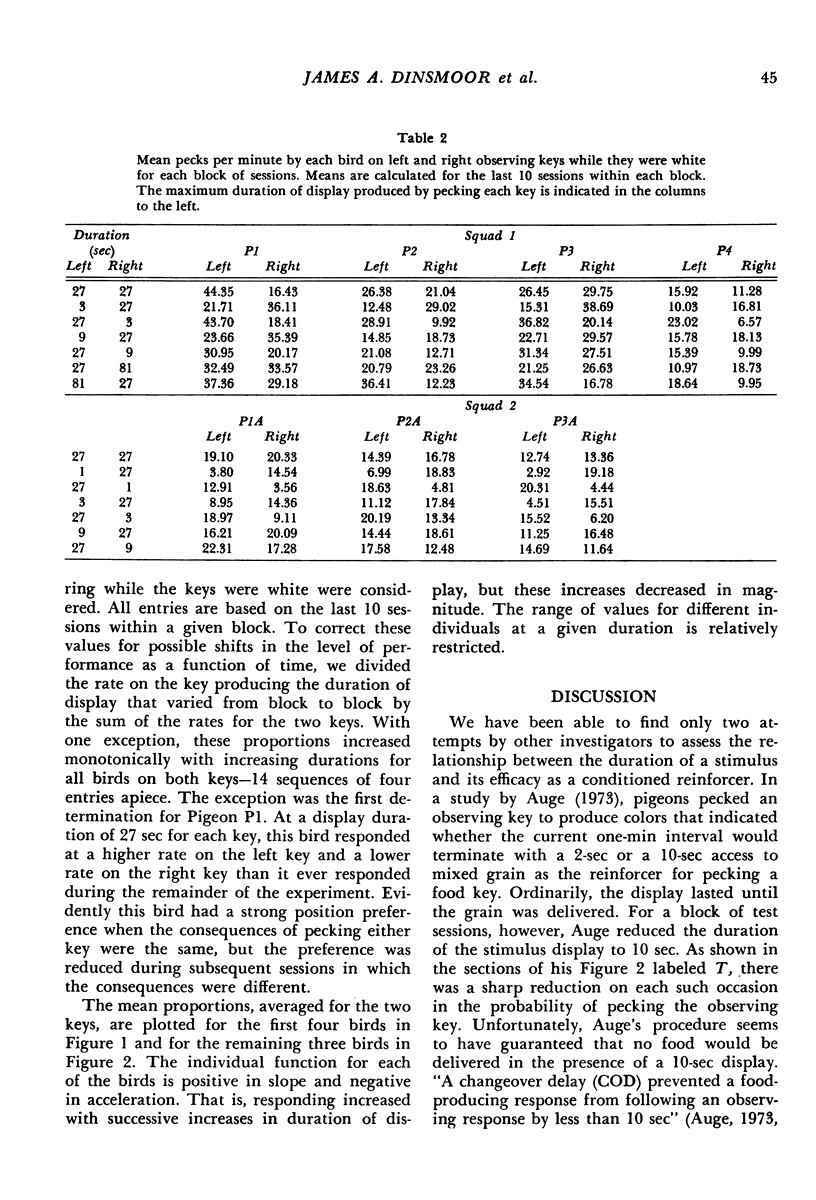
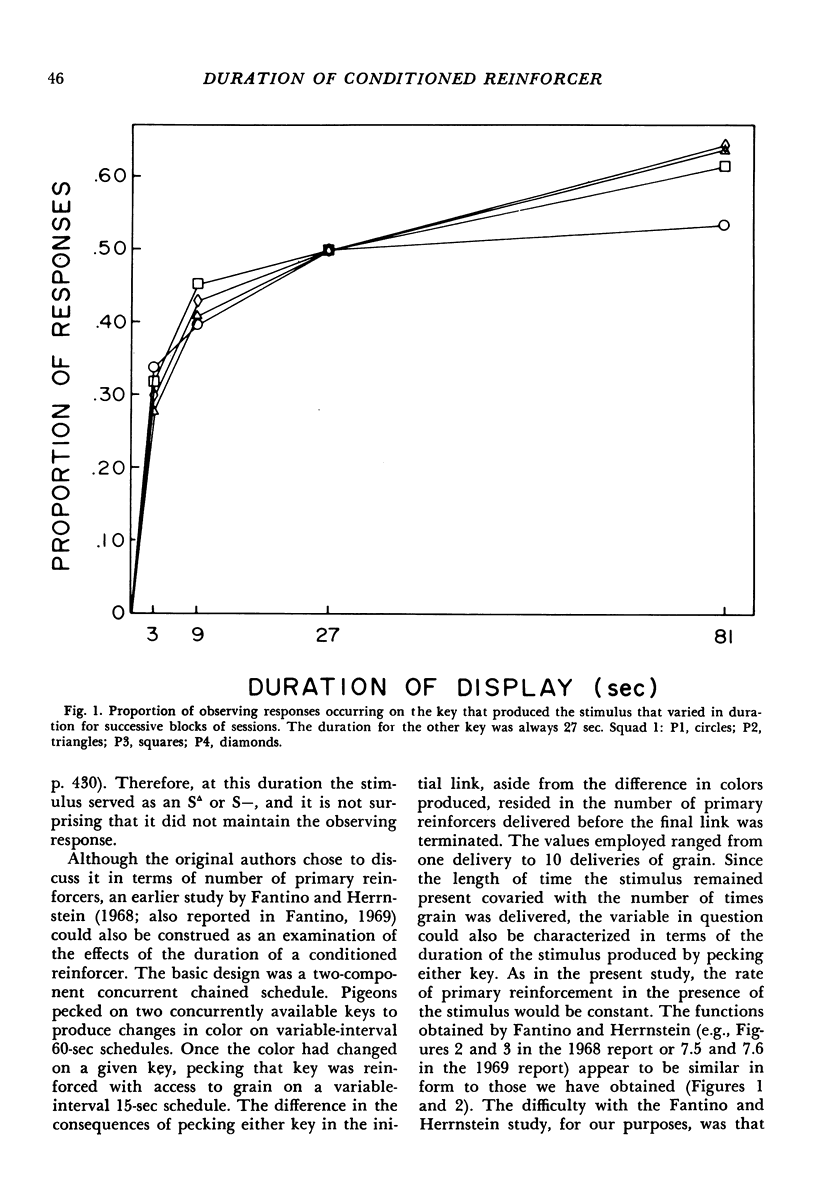
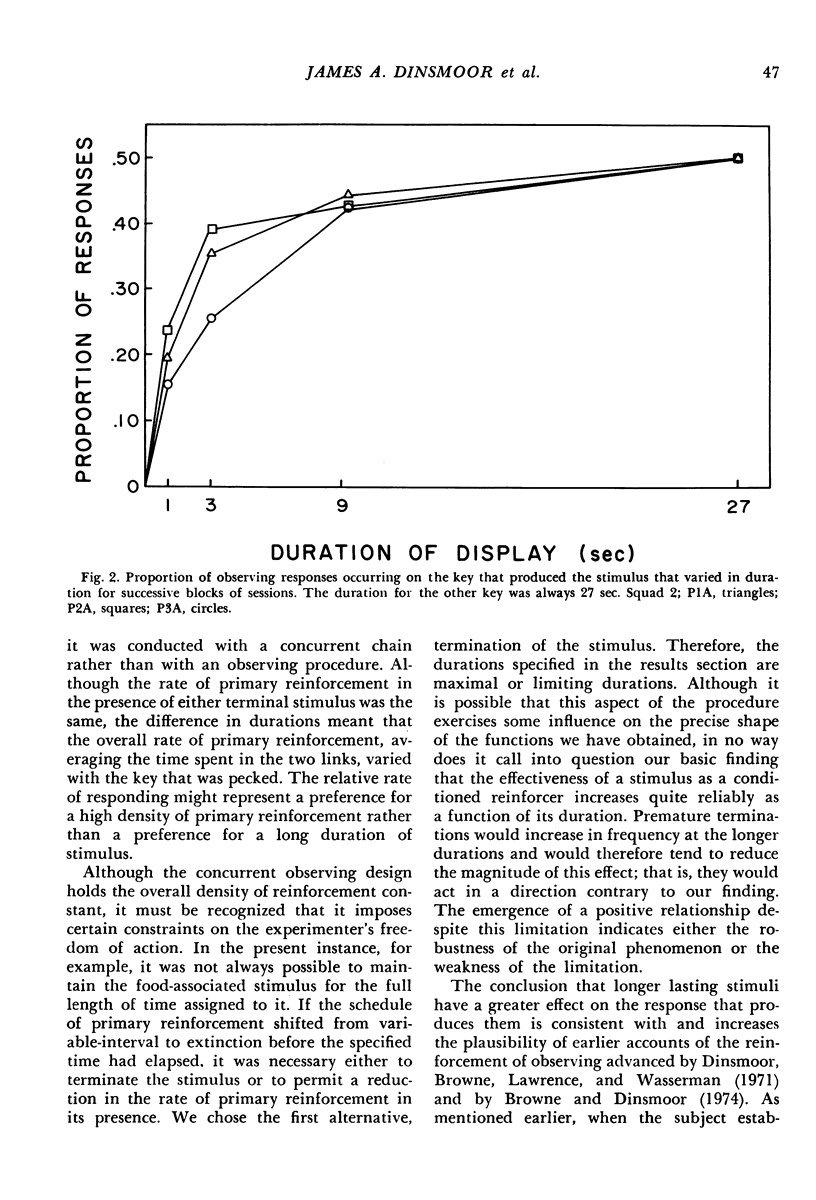
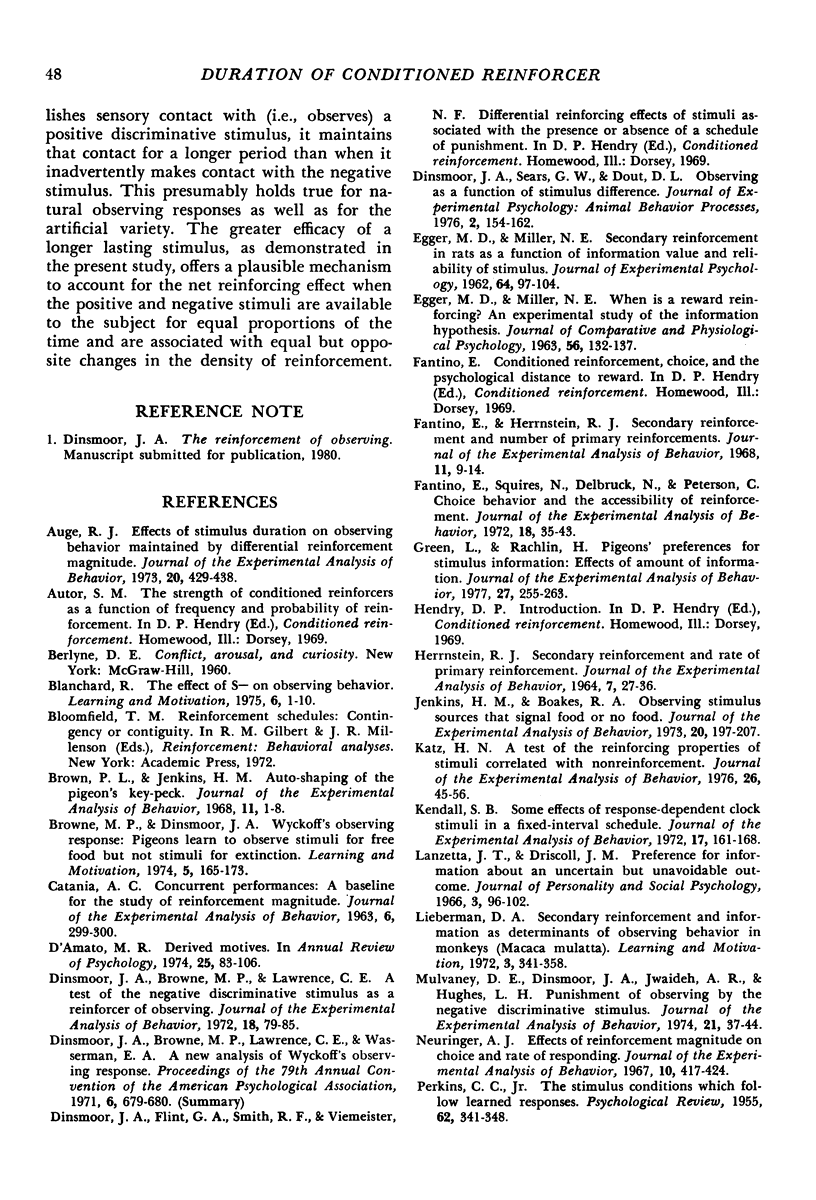
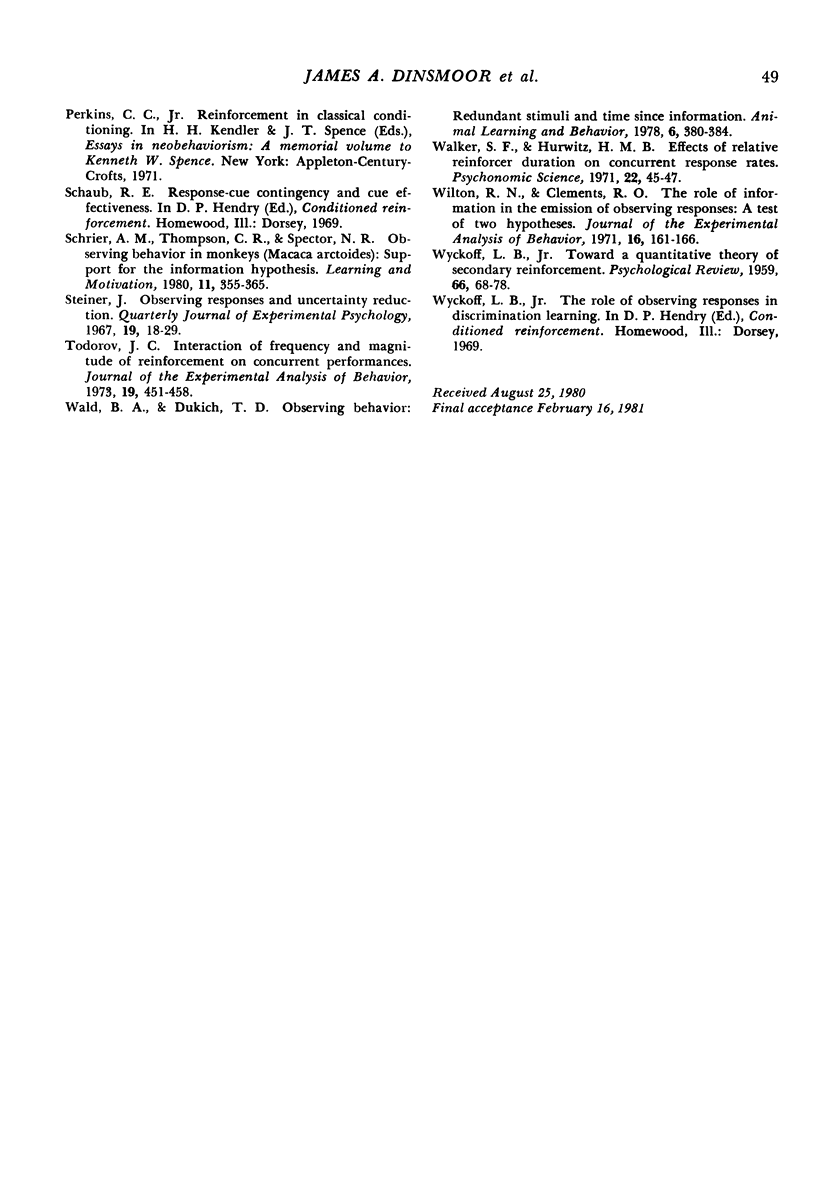
Selected References
These references are in PubMed. This may not be the complete list of references from this article.
- Auge R. J. Effects of stimulus duration on observing behavior maintained by differential reinforcement magnitude. J Exp Anal Behav. 1973 Nov;20(3):429–438. doi: 10.1901/jeab.1973.20-429. [DOI] [PMC free article] [PubMed] [Google Scholar]
- Brown P. L., Jenkins H. M. Auto-shaping of the pigeon's key-peck. J Exp Anal Behav. 1968 Jan;11(1):1–8. doi: 10.1901/jeab.1968.11-1. [DOI] [PMC free article] [PubMed] [Google Scholar]
- CATANIA A. C. Concurrent performances: a baseline for the study of reinforcement magnitude. J Exp Anal Behav. 1963 Apr;6:299–300. doi: 10.1901/jeab.1963.6-299. [DOI] [PMC free article] [PubMed] [Google Scholar]
- Dinsmoor J. A., Browne M. P., Lawrence C. E. A test of the negative discriminative stimulus as a reinforcer of observing. J Exp Anal Behav. 1972 Jul;18(1):79–85. doi: 10.1901/jeab.1972.18-79. [DOI] [PMC free article] [PubMed] [Google Scholar]
- EGGER M. D., MILLER N. E. Secondary reinforcement in rats as a function of information value and reliability of the stimulus. J Exp Psychol. 1962 Aug;64:97–104. doi: 10.1037/h0040364. [DOI] [PubMed] [Google Scholar]
- Fantino E., Herrnstein R. J. Secondary reinforcement and number of primary reinforcements. J Exp Anal Behav. 1968 Jan;11(1):9–14. doi: 10.1901/jeab.1968.11-9. [DOI] [PMC free article] [PubMed] [Google Scholar]
- Fantino E., Squires N., Delbrück N., Peterson C. Choice behavior and the accessibility of the reinforcer. J Exp Anal Behav. 1972 Jul;18(1):35–43. doi: 10.1901/jeab.1972.18-35. [DOI] [PMC free article] [PubMed] [Google Scholar]
- Green L., Rachlin H. Pigeons' preferences for stimulus information: effects of amount of information. J Exp Anal Behav. 1977 Mar;27(2):255–263. doi: 10.1901/jeab.1977.27-255. [DOI] [PMC free article] [PubMed] [Google Scholar]
- HERRNSTEIN R. J. SECONDARY REINFORCEMENT AND RATE OF PRIMARY REINFORCEMENT. J Exp Anal Behav. 1964 Jan;7:27–36. doi: 10.1901/jeab.1964.7-27. [DOI] [PMC free article] [PubMed] [Google Scholar]
- Jenkins H. M., Boakes R. A. Observing stimulus sources that signal food or no food. J Exp Anal Behav. 1973 Sep;20(2):197–207. doi: 10.1901/jeab.1973.20-197. [DOI] [PMC free article] [PubMed] [Google Scholar]
- Katz H. N. A test of the reinforcing properties of stimuli correlated with nonreinforcement. J Exp Anal Behav. 1976 Jul;26(1):45–56. doi: 10.1901/jeab.1976.26-45. [DOI] [PMC free article] [PubMed] [Google Scholar]
- Kendall S. B. Some effects of response-dependent clock stimuli in a fixed-interval schedule. J Exp Anal Behav. 1972 Mar;17(2):161–168. doi: 10.1901/jeab.1972.17-161. [DOI] [PMC free article] [PubMed] [Google Scholar]
- Lanzetta J. T., Driscoll J. M. Preference for information about an uncertain but unavoidable outcome. J Pers Soc Psychol. 1966 Jan;3(1):96–102. doi: 10.1037/h0022674. [DOI] [PubMed] [Google Scholar]
- Mulvaney D. E., Dinsmoor J. A., Jwaideh A. R., Hughes L. H. Punishment of observing by the negative discriminative stimulus. J Exp Anal Behav. 1974 Jan;21(1):37–44. doi: 10.1901/jeab.1974.21-37. [DOI] [PMC free article] [PubMed] [Google Scholar]
- Neuringer A. J. Effects of reinforcement magnitude on choice and rate of responding. J Exp Anal Behav. 1967 Sep;10(5):417–424. doi: 10.1901/jeab.1967.10-417. [DOI] [PMC free article] [PubMed] [Google Scholar]
- PERKINS C. C., Jr The stimulus conditions which follow learned responses. Psychol Rev. 1955 Sep;62(5):341–348. doi: 10.1037/h0040520. [DOI] [PubMed] [Google Scholar]
- Steiner J. Observing responses and uncertainty reduction. Q J Exp Psychol. 1967 Feb;19(1):18–29. doi: 10.1080/14640746708400063. [DOI] [PubMed] [Google Scholar]
- Todorov J. C. Interaction of frequency and magnitude of reinforcement on concurrent performances. J Exp Anal Behav. 1973 May;19(3):451–458. doi: 10.1901/jeab.1973.19-451. [DOI] [PMC free article] [PubMed] [Google Scholar]
- WYCKOFF L. B. Toward a quantitative theory of secondary reinforcement. Psychol Rev. 1959 Jan;66(1):68–78. doi: 10.1037/h0046882. [DOI] [PubMed] [Google Scholar]
- Wilton R. N., Clements R. O. The role of information in the emission of observing responses: a test of two hypotheses. J Exp Anal Behav. 1971 Sep;16(2):161–166. doi: 10.1901/jeab.1971.16-161. [DOI] [PMC free article] [PubMed] [Google Scholar]


